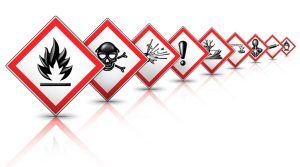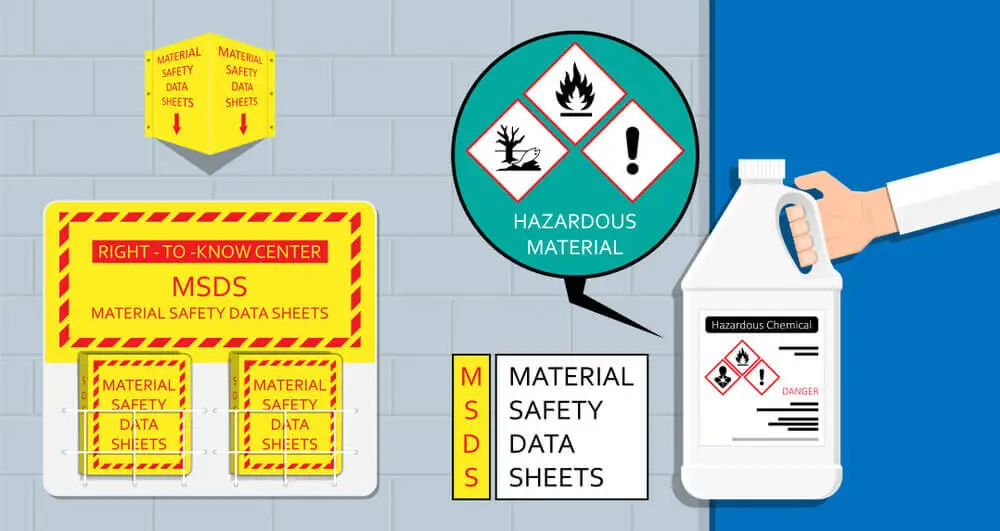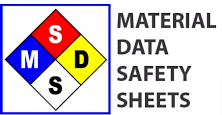Ekotox Centers are providing consultancy services and customers support in the area of EU chemicals legislation – Safety Data Sheets, REACH Registration, Only Representative, REACH Authorisation, REACH/CLP Screening, Legal Compliance Services.
– just call us +421 2 45943712, send an e-mail on ekotox(at)ekotox.eu or skype ekotox.bratislava
Chemical Safety: A Crucial Responsibility for All Businesses and Organizations
Chemical safety is one of the numerous challenges that businesses and organizations encounter, even if they do not directly offer products or services involving chemicals. Due to the inherent hazards of many chemicals, companies that produce, import, distribute, or use chemicals in any capacity must provide precise information to their employees. This information is compiled in a Safety Data Sheet (SDS).
When considering which businesses require SDSs, you might think of paint manufacturers, paper companies, and petrochemical firms. However, even a local school needs SDSs for the cleaning products the janitor uses daily.
The content of a Safety Data Sheet (SDS) is a crucial element for ensuring the safe handling, storage, and use of chemical substances and mixtures. An SDS is typically divided into 16 sections, each providing specific information required for safety and regulatory compliance. Below is an overview of what each section typically contains:
- Identification: This section includes the product identifier used on the label, the recommended use of the chemical, and essential contact information for the supplier, manufacturer, or other responsible party.
- Hazard Identification: Provides details on the classification of the chemical, including its associated hazards. It also includes label elements like hazard symbols, signal words (e.g., “Danger” or “Warning”), hazard statements, and precautionary statements.
- Composition/Information on Ingredients: Lists the chemical ingredients and their concentrations. This section helps identify substances that may pose health risks.
- First-Aid Measures: Describes necessary steps to take in the event of exposure. It covers different routes of exposure such as inhalation, skin and eye contact, and ingestion. It also provides advice on immediate medical attention and special treatment if needed.
- Fire-Fighting Measures: Provides information on suitable extinguishing media, specific hazards arising from the chemical during a fire, and special protective equipment and precautions for firefighters.
- Accidental Release Measures: Details the procedures to follow in the event of a spill or leak. This includes emergency procedures, protective equipment, and proper methods for containment and cleanup.
- Handling and Storage: Outlines safe handling practices and conditions for safe storage, including any incompatibilities. This section helps prevent accidents during the chemical’s use and storage.
- Exposure Controls/Personal Protection: Specifies exposure limits, engineering controls, and personal protective equipment (PPE) required to minimize exposure. This includes information on respirators, gloves, eye protection, and clothing.
- Physical and Chemical Properties: Lists the chemical’s characteristics such as appearance, odor, pH, melting point, boiling point, flash point, and solubility. This information is crucial for understanding how the chemical behaves under various conditions.
- Stability and Reactivity: Provides details on the chemical’s stability and the possibility of hazardous reactions. It includes information on conditions to avoid, incompatible materials, and hazardous decomposition products.
- Toxicological Information: Describes the health effects of exposure, including symptoms of exposure, acute and chronic effects, and numerical measures of toxicity such as LD50.
- Ecological Information: Offers information on the chemical’s environmental impact, including its potential to persist and degrade in the environment, bioaccumulation potential, and effects on aquatic and terrestrial organisms.
- Disposal Considerations: Provides guidance on the proper disposal methods for the chemical and its container, considering local, regional, and national regulations.
- Transport Information: Includes guidelines for the safe transportation of the chemical, such as UN number, proper shipping name, transport hazard class, packing group, and environmental hazards.
- Regulatory Information: Lists safety, health, and environmental regulations specific to the chemical that are not indicated elsewhere in the SDS. This section helps ensure compliance with applicable laws and regulations.
- Other Information: Contains any other relevant information, including the date of preparation or last revision of the SDS, and key references used in the document’s preparation.
The SDS is an essential tool for workplace safety, providing comprehensive information on chemical hazards and how to manage them safely. It ensures that workers and emergency responders have access to necessary information to protect themselves and others from potential chemical hazards.

How Can Ekotox Centers Help?
Ekotox Centers Chemical Management software enables companies to gain complete control over their safety data sheets and chemical safety through comprehensive inventory management and reporting features. Ekotox Centers’ Product Compliance software allows for efficient SDS authoring, ensuring that all regulatory and compliance requirements are met for every market in which you operate.
If the information required under this Annex, appropriate and available, are included in the safety data sheet in the appropriate subsections. Safety Data Sheet does not contain blank subsections.
